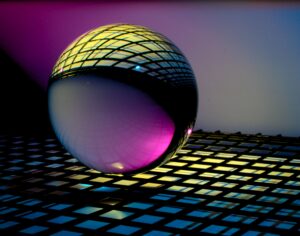Ah, the big news! Devin, the world’s first AI software engineer, burst onto the scene on March 12, 2024, courtesy of Cognition Labs and the backing of Peter Thiel’s Founders Fund. Imagine a tool that can write code, spin up websites, and develop software with just a nudge in the right direction. Sounds like sci-fi, right? Well, welcome to the present.
Devin isn’t just any AI—it’s the dream co-worker you never knew you needed. With its own code editor and interpreter, a terminal console for the fun of debugging (automatically, because why not?), and even a browser for those deep dives into the abyss of Stack Overflow. The cherry on top? A timeline feature to watch Devin’s thought process unfold and a chat prompt for those moments when it needs a human touch.
So, Is Software Engineering Taking a Permanent Nap?
Enter the ring, opinions from the tech titans. Jensen Huang, the visionary behind NVIDIA, claims we’re heading towards a future where English is the new programming language. Meanwhile, Andrew Ng, AI whisperer, insists that while LLMs have significantly changed the software development workflow, “it’s very hard for AI to automate everything programmers do“, therefore coding is here to stay. So, is the essence of programming fundamentally changing?
Dissecting Software Engineering
Before we get ahead of ourselves, let’s break down what software engineering really entails. From problem-solving to deployment, it’s a multifaceted beast. Here’s a simplified overview of key software engineering phases:
- Problem Definition – Understand the problem by clearly defining its scope, objectives, and constraints.
- Solution Planning – Plan the approach by researching and selecting appropriate third-party libraries, tools, and methodologies.
- Architecture Design – Define the software architecture by outlining the system’s structure, components, and interactions.
- Implementation – Code the individual components of the architecture, translating design into functional software.
- Testing & Debugging – Identify and fix errors in the code, ensuring the software meets requirements and functions correctly.
- Deployment – Release the software to a production environment, making it available for use.
- Maintenance & Evolution – Continuously monitor, update, and improve the software to address emerging needs and issues.
Based on Devin’s demo, some of these stages are being significantly automated. In particular, #4 Implementation and #5 Testing & Debugging. For some of the other stages, the engineer may still need to significantly steer the AI in the right direction. So the question isn’t whether AI will replace engineers, but how it’s transforming the way we approach development. Devin and its kin are reshaping our toolkit, not emptying it. Another way to think about this development is to use an analogy.
Driving Analogies: From Manual to Autonomous
Picture the evolution of self-driving cars. We started with keeping the car in its lane and now we’re navigating city streets sans hands. The journey from manual coding to AI-powered development mirrors this trajectory. From GitHub Copilot’s suggestions to Devin’s comprehensive solutions, we’re gradually shifting towards a more automated workflow, where the developer’s role evolves into one of guidance and oversight.
| Automation Stage | Driving (vehicles) | Software Development |
|---|---|---|
| Fully Manual | Manual Control – The human driver is responsible for all driving actions, with no automation involved. | Manual Coding – Developers write all code manually, relying solely on their expertise and knowledge. |
| Basic Assistance | Lane Assistance – The AI assists in maintaining the vehicle’s position within the lane, reducing the driver’s workload. Adaptive Cruise Control – The AI adjusts the vehicle’s speed to maintain a safe distance from the car ahead. | Code Autocompletion – Tools like GitHub Copilot assist developers by autocompleting lines of code, speeding up the coding process. Code Generation – AI models like ChatGPT can generate chunks of code based on user prompts, further reducing manual coding efforts. |
| Partial Automation and Planning | Automated Lane Changes and Navigation – The AI can execute lane changes and navigate through forks in the road without human intervention. Intersection Handling – The AI can stop at traffic signs and lights, and execute turns, further reducing the need for human input. | Advanced Code Diffing – Technologies like Cursor Copilot++ enable the generation of larger code diffs, allowing for more significant code changes with AI assistance. Integrated Development Automation – Solutions like Devin integrate multiple software development tools and provide oversight, enabling a more automated and cohesive development process. |
| Fully Automated | Full Self-Driving – After achieving feature completeness, the focus shifts to refining the system’s quality and reliability until full self-driving capability is attained. | ? |
Conclusion: The Future Is Not Written in Code Alone
Software development isn’t vanishing; it’s merely transforming. As AI continues to evolve, the real question becomes: how do we, as humans, steer these advancements? Israel Niezen, our CEO, advises engineers to deepen their understanding of the business and people behind the problems they’re solving. The future belongs to those who can bridge the gap between technology and humanity.
Moreover, it’s crucial to view the emergence of AI in software engineering with a balanced perspective. Remember the early skepticism around the internet, electric vehicles, 3D printing, and industrial robotics? Each of these technologies surpassed initial doubts to redefine their fields. The lesson? Keep an open mind about where AI-powered software engineering could lead us in the next decade.
So, what’s your take on the future of software engineering with AI at the helm? Feel free to share your thoughts through our social media channels (LinkedIn, Instagram); and why not, even in person if you are interested in working with us! (😉😉 open positions 😉😉). And if you’re itching to dive deeper into the world of AI and development, why not check out the Pair Programming with a Large Language Model class by DeepLearning.ai?
In the world of software engineering, change is the only constant. With AI like Devin joining the ranks, we’re not witnessing the end of an era but the dawn of a new one. The future of development is collaborative, innovative, and, most importantly, human-guided. Let’s embrace it.
Happy coding (or should we say, prompting)?






